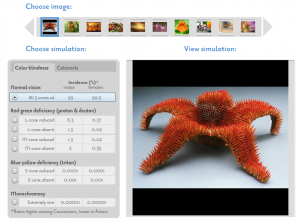Community Embraces New Word Game at Mid-Year Play Day This past Sunday, families at Takoma Park’s Seventh Annual Mid-Year Play Day had the opportunity to experience OtherWordly for the first time. Our educational language game drew curious children and parents to our table throughout the afternoon. Words in Space Several children gathered around our iPads […]
Read moreAuthor: IDEA
 Do we need yet another online version of Economics 101? Why are universities putting courseware online, and what’s in it for students and schools? Inside Higher Ed’s post by Steve Kolowich, “Online Courseware’s Existential Moment,” discusses the world of open courseware, and what the next chapter may look like. He includes a short interview with Taylor Walsh, author of Unlocking the Gate, a new book about how universities are opening up access to courses. Here are some key points and excerpts from the article:
Do we need yet another online version of Economics 101? Why are universities putting courseware online, and what’s in it for students and schools? Inside Higher Ed’s post by Steve Kolowich, “Online Courseware’s Existential Moment,” discusses the world of open courseware, and what the next chapter may look like. He includes a short interview with Taylor Walsh, author of Unlocking the Gate, a new book about how universities are opening up access to courses. Here are some key points and excerpts from the article:
Like museums in the physical world, WebExhibits presents information that is, for the most part, timeless. Yet WebExhibits also demonstrates a radical departure from physical museums, in terms of 24/7 accessibility, adaptation to support multiple learning styles, and cost-effectiveness. As of October 2010, 75% of U.S. households have high-speed Internet access, and virtually all students have Internet access at schools or libraries.
Virtual exhibits are cost effective. It costs only a few pennies to serve a WebExhibits visitor, in contrast with a typical U.S. museum’s cost of $23 per visitor.
If you share our passion for leveraging technology to increase scientific, artistic, and cultural literacy, then get involved! You can nurture bold ideas so that they grow and flourish. (more…)
IDEA presented and demonstrated “Concept Maps for Online Exhibits” at the 2010 Museums and the Web Conference, April 13-17 in Denver. Concept maps are a useful component of online exhibits, as they help meet the needs of multiple learning styles and provide an innovative way to visualize information. SpicyNodes’ radial mapping engine improves upon previous
We’ve just launched a new blog for SpicyNodes, our new concept mapping tool. In that blog, we’ll follow news about the SpicyNodes project development and use, as well as a broader view about concept mapping, mind mapping, and related ways to visualize information.
Not everyone sees the world as you do
You can try the Color Vision tool yourself by selecting an image and choosing a color blindness or cataract simulation. In the process, you can gain an understanding of why it’s important to design web sites that are accessible to people with these vision problems.
Why it matters
Hundreds of millions of people have vision problems. Two primary vision problems are cataracts and color blindness. When a person has a cataract, the lens in his or her eye is no longer entirely transparent. Because aging is the most common risk factor for the condition, increased life expectancy has made cataracts the leading cause of blindness worldwide. (more…)
In 2008, IDEA conducted a study about online experiences. The report (download PDF here) outlines key findings from surveys that explored factors that drive online experience as expressed by the three different subject groups – nonprofit organizations and cities, web designers and firms, and the general public. (more…)


